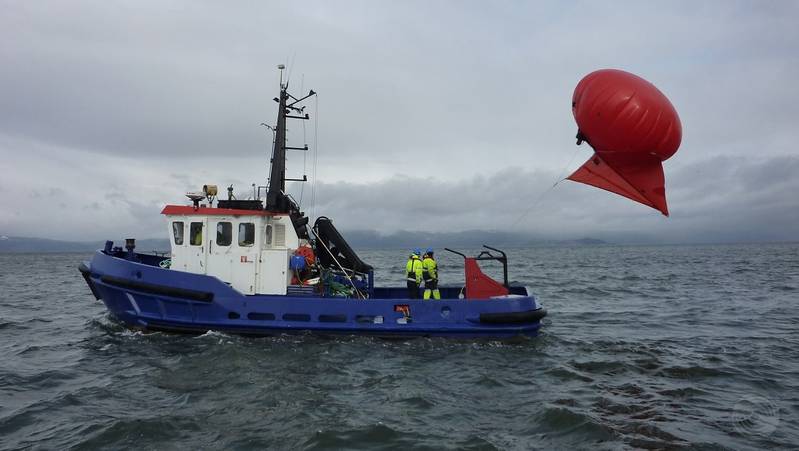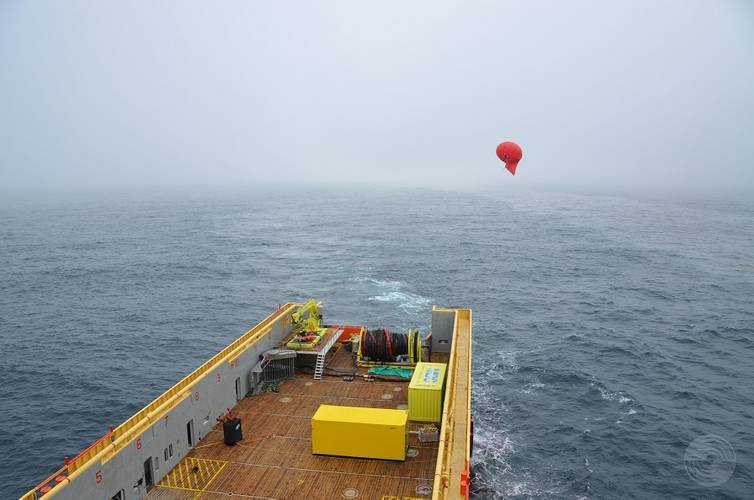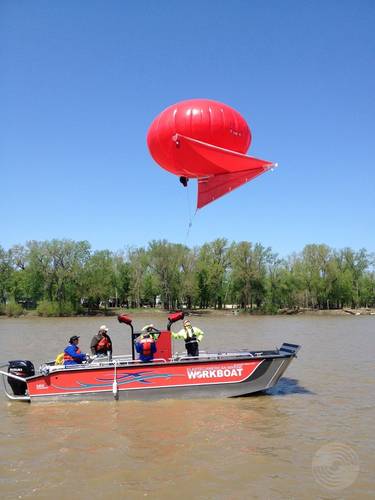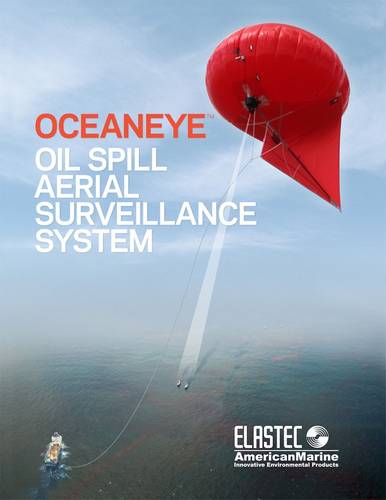Elastec/American Named Distributor for OceanEye Oil Spill Aerial Surveillance System
“You can have the best oil spill equipment in the world,” said Donnie Wilson, CEO of Elastec/American Marine, “but if you can’t see the oil, you can’t recover it.”
When Elastec/American Marine managed the controlled burn operation in the Gulf of Mexico in 2010, the response operation was more efficient when aerial surveillance was available. Fixed-wing aircraft and helicopters were frequently employed in the search for oil, but those alternatives proved costly and were also unavailable at night. In other scenarios, limitations such as fog, heavy rains or snow may make flying impractical and unsafe for the flight crew. Valuable time may be lost preparing and filing flight plans, and sometimes flight search patterns need to be altered because the flow of oil can change directions. Attention must also be paid to altitude, flight duration and fuel availability.
Elastec/American Marine is always on the hunt for new technologies to improve oil spill response operations. In the search for an alternative to traditional aerial surveillance, Wilson discovered OceanEyeTM in Norway. Compact and light, effective by day and by night, resistant to the elements and more cost-effective than traditional air surveillance systems, OceanEye delivers high-definition imagery and reconnaissance data to the heart of response operations.
Technologically intelligent, yet simple to deploy and operate, the innovative OceanEye oil spill aerial surveillance system, developed by Maritime Robotics of Norway, drastically reduces emergency response operation costs, as well as health, safety and environmental (HSE) risks. OceanEye provides the technologies to locate the spill, assess its dimensions, monitor its movement and communicate information instantly to other responders for water or land-based spills.
Deployment of the OceanEye is less expensive than employing aircraft, and the system allows operators to search for and locate oil spills in sunlight, at night or when fog intrudes. It has a visibility range of about four nautical miles at an altitude of 150 meters, which is within FAA regulations. (The balloon can be flown at an elevation of 150 meters without FAA approval or higher, with FAA approval, in U.S. waters.)
OceanEye features a high-visibility, vibrant red balloon, made of robust urethane and ripstop nylon sailcloth to withstand all climates. It is smaller than most aerostats, and inflating and deflating the OceanEye balloon is quick and simple. The entire system can be launched or retrieved by just two people, and operated by one. Powered by high efficiency lithium batteries, OceanEye can also utilize ground power where available.
The balloon houses a high-performance triple sensor package with a high resolution camera producing day and night (EO/IR) photo and video imaging, as well as an Automatic Identification System (AIS) receiver.
The rugged touch-screen, hand-held viewer tablet is pre-loaded with proprietary OverView software, longitude and latitude coordinate software, as well as AIS overlay to locate and track other vessels.
The base unit has a footprint of approximately four feet by three feet and a height of five feet (1.20 x 0.80 x 1.59 meters) and serves as the balloon’s docking cradle, helium filling station and tool storage cabinet. It fits easily on the deck of an oil spill response vessel, fishing boat or in the bed of a pickup truck for land-based operations. The base also contains the electric winch responsible for deployment, recovery and control of the balloon.
OceanEye is endorsed by the Norwegian Clean Seas Association for Operating Companies (NOFO). Two systems are on-call through NOFO, serving more than 30 operating companies on the Norwegian Continental Shelf.
Elastec/American Marine is proud to be the exclusive distributor of the OceanEye in the Western Hemisphere. The oil spill aerial surveillance is another innovative environmental response technology from Elastec/American Marine to help keep our world clean.
elastec.com/oilspill/oceaneye














